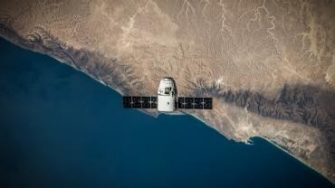- UNSW
- ...
- Centre for Marine Science and Innovation
- Our research
- Coastal, regional and global oceanography
- Observation impact assessment of future high-resolution observations
- Home
- About us
-
Our research
-
Ecological management
- Clothes, fibres and filters that reduce pollution by micro and nano debris
- In Bygone Dives: Exploring the use of recreational SCUBA diving photographs
- Restoring oyster reefs to NSW
- Living Seawalls
- Operation Posidonia: Healing old wounds by restoring an endangered seagrass in boat mooring scars
- Operation Crayweed: restoring Sydney’s underwater forests
- Project Restore: restoration of seascapes in Sydney Harbour
-
Marine biotechnology and aquaculture
- Antibiotic resistance in the marine environment
- Priming fish with microbial communities to enhance health and digestibility of sustainable feeds
- Bio-prospecting marine microbial diversity for new antimicrobial drugs and bioactives
- Improving technologies for inland aquaculture in Papua New Guinea
- Improving the sustainability of rice-shrimp farming systems in the Mekong Delta, Vietnam
-
Anthropogenic and climate change impacts and interactions
- Ecology and impacts of marine invaders
- Impacts of multiple stressors on marine communities
- Impacts of urbanisation on the diversity and functioning of coastal systems
- In the spotlight: impacts of artificial light at night on the marine environment
- Linking functional diversity to stress thresholds for coastal conservation
- Effects of climate change on Shark Bay microbial mats
- Adapting to coastal tropicalisation: ecosystem function implications
- Global threats to ocean forests: understanding impacts of heatwaves, herbivores and diseases in kelp ecosystems
- How to make reliable high-resolution future projections for coastal regions
- Marine Heatwaves in a changing world
- Clothes, fibres and filters that reduce pollution by micro and nano debris
- Coastal, regional and global oceanography
- Fisheries and coastal resource management
-
Integrated micro-/macro-biology and ecology
- Coastal microbial observatories
- Functional diversity and redundancy of marine communities
- Microbial contribution to life in the deep sea
- The dynamics of evolution: How horizontal gene transfer drives the diversification and adaptation of complex, bacterial communities
- Probiotics for the ocean – how microbes can improve the health and performance of macroalgae
- Function and application of novel proteins from sponge symbionts
- Understanding disease in marine seaweeds: from molecular mechanisms to ecological consequences
- Understanding the role of antibiotic producing bacteria in the seaweed algal holobiont
- Wake interference by swimming crocodiles
- The effect of microbial diversity vs function on marine holobionts
- Understanding plant soil feedbacks control interactions between marine macrophytes
- Do microbes facilitate the range expansion of tropical fish into temperate systems?
- Science communication and outreach
- Solutions for estuarine and coastal stressors lab (SEACS Lab)
- Coastal and regional Oceanography lab
-
Ecological management
- Study with us
- Giving
- News
- Opportunities
- Home
- About us
-
Our research
Ecological management
- Clothes, fibres and filters that reduce pollution by micro and nano debris
- In Bygone Dives: Exploring the use of recreational SCUBA diving photographs
- Restoring oyster reefs to NSW
- Living Seawalls
- Operation Posidonia: Healing old wounds by restoring an endangered seagrass in boat mooring scars
- Operation Crayweed: restoring Sydney’s underwater forests
- Project Restore: restoration of seascapes in Sydney Harbour
Marine biotechnology and aquaculture
- Antibiotic resistance in the marine environment
- Priming fish with microbial communities to enhance health and digestibility of sustainable feeds
- Bio-prospecting marine microbial diversity for new antimicrobial drugs and bioactives
- Improving technologies for inland aquaculture in Papua New Guinea
- Improving the sustainability of rice-shrimp farming systems in the Mekong Delta, Vietnam
Anthropogenic and climate change impacts and interactions
- Ecology and impacts of marine invaders
- Impacts of multiple stressors on marine communities
- Impacts of urbanisation on the diversity and functioning of coastal systems
- In the spotlight: impacts of artificial light at night on the marine environment
- Linking functional diversity to stress thresholds for coastal conservation
- Effects of climate change on Shark Bay microbial mats
- Adapting to coastal tropicalisation: ecosystem function implications
- Global threats to ocean forests: understanding impacts of heatwaves, herbivores and diseases in kelp ecosystems
- How to make reliable high-resolution future projections for coastal regions
- Marine Heatwaves in a changing world
- Clothes, fibres and filters that reduce pollution by micro and nano debris
Integrated micro-/macro-biology and ecology
- Coastal microbial observatories
- Functional diversity and redundancy of marine communities
- Microbial contribution to life in the deep sea
- The dynamics of evolution: How horizontal gene transfer drives the diversification and adaptation of complex, bacterial communities
- Probiotics for the ocean – how microbes can improve the health and performance of macroalgae
- Function and application of novel proteins from sponge symbionts
- Understanding disease in marine seaweeds: from molecular mechanisms to ecological consequences
- Understanding the role of antibiotic producing bacteria in the seaweed algal holobiont
- Wake interference by swimming crocodiles
- The effect of microbial diversity vs function on marine holobionts
- Understanding plant soil feedbacks control interactions between marine macrophytes
- Do microbes facilitate the range expansion of tropical fish into temperate systems?
- Study with us
- Giving
- News
- Opportunities

Observing System Simulation Experiments (OSSEs) are a recent innovation in ocean modelling, adapted from meteorology, that use synthetic ocean observations to inform future observational strategies, e.g. an artificial temperature record from a ‘toy’ glider or sea-surface height observations from a future satellite.
By assimilating these synthetic observations into a numerical model, we’ll investigate how well the data stream improves the model estimates, thus guiding future observing strategies.
In this project, we will perform OSSEs to provide valuable support for the next generation of high-res ocean observing systems, both in Australia (through IMOS) and Internationally. An international example is NASA’s Surface Water Ocean Topography (SWOT) mission, opens in a new window, a ground-breaking future satellite to be launched in 2021. SWOT will use pioneering wide-swath radar interferometry to measure ocean features as small as 2km — more than ten times the resolution of current technologies. By comparing simulated SWOT observations with the model “truth”, we will establish a valuable baseline for calibration and validation of real SWOT data once it is launched in 2021. This project will be co-supervised by Dr Shane Keating (UNSW), Moninya Roughan (UNSW), Dr Colette Kerry (UNSW) and Dr Patrice Klein (NASA Jet Propulsion Laboratory).




